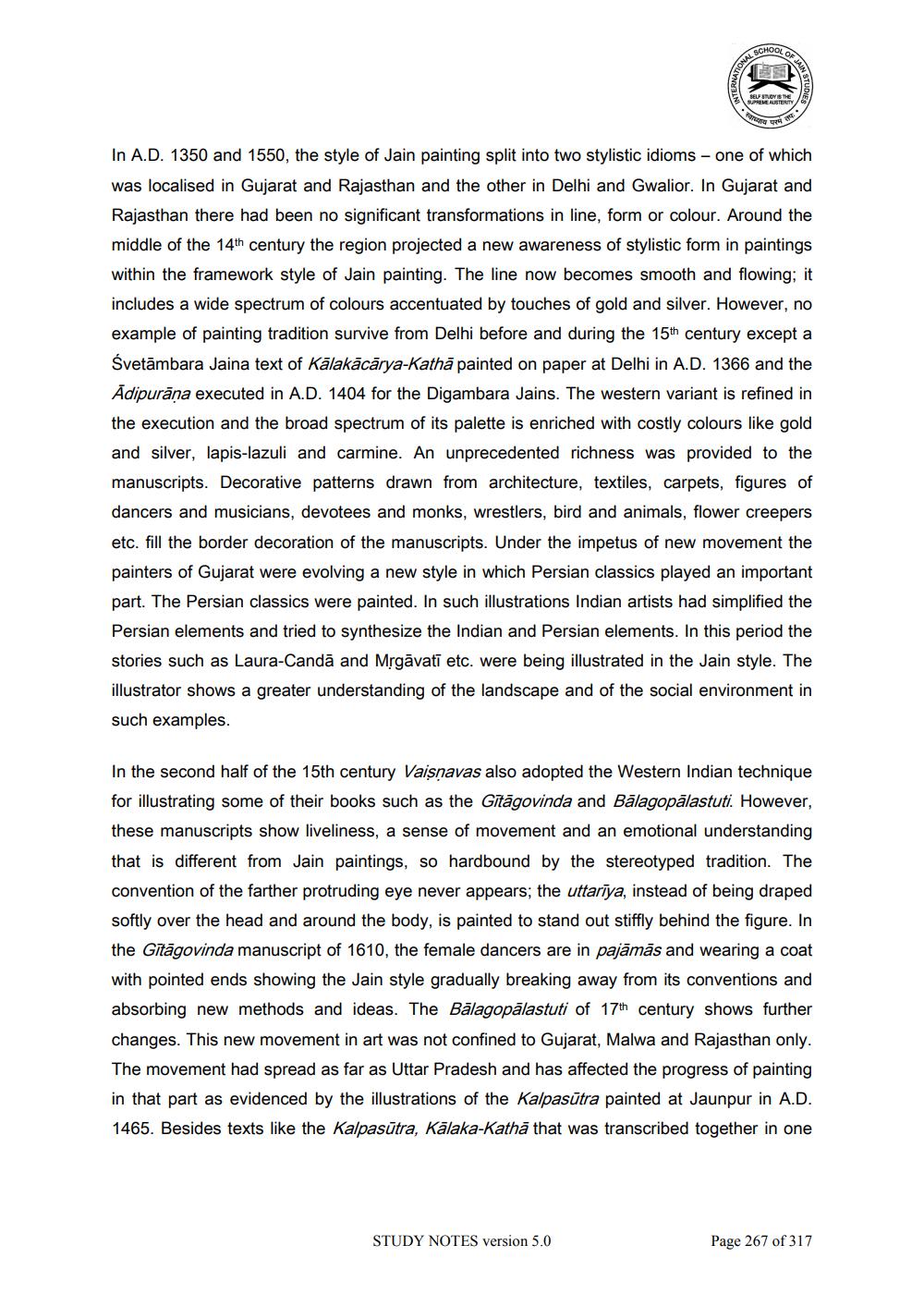________________
SCHOOL
STUDY NOTES version 5.0
OF
परमे
AN STUDIES
SELF STUDY IS THE SUPREME AUSTERITY
स्वाध्याय
NES 20
In A.D. 1350 and 1550, the style of Jain painting split into two stylistic idioms - one of which was localised in Gujarat and Rajasthan and the other in Delhi and Gwalior. In Gujarat and Rajasthan there had been no significant transformations in line, form or colour. Around the middle of the 14th century the region projected a new awareness of stylistic form in paintings within the framework style of Jain painting. The line now becomes smooth and flowing; it includes a wide spectrum of colours accentuated by touches of gold and silver. However, no example of painting tradition survive from Delhi before and during the 15th century except a Śvetāmbara Jaina text of Kālakācārya-Kathā painted on paper at Delhi in A.D. 1366 and the Adipurāṇa executed in A.D. 1404 for the Digambara Jains. The western variant is refined in the execution and the broad spectrum of its palette is enriched with costly colours like gold and silver, lapis-lazuli and carmine. An unprecedented richness was provided to the manuscripts. Decorative patterns drawn from architecture, textiles, carpets, figures of dancers and musicians, devotees and monks, wrestlers, bird and animals, flower creepers etc. fill the border decoration of the manuscripts. Under the impetus of new movement the painters of Gujarat were evolving a new style in which Persian classics played an important part. The Persian classics were painted. In such illustrations Indian artists had simplified the Persian elements and tried to synthesize the Indian and Persian elements. In this period the stories such as Laura-Canda and Mrgāvatī etc. were being illustrated in the Jain style. The illustrator shows a greater understanding of the landscape and of the social environment in such examples.
In the second half of the 15th century Vaisnavas also adopted the Western Indian technique for illustrating some of their books such as the Gītāgovinda and Balagopalastuti. However, these manuscripts show liveliness, a sense of movement and an emotional understanding that is different from Jain paintings, so hardbound by the stereotyped tradition. The convention of the farther protruding eye never appears; the uttariya, instead of being draped softly over the head and around the body, is painted to stand out stiffly behind the figure. In the Gitägovinda manuscript of 1610, the female dancers are in pajamas and wearing a coat with pointed ends showing the Jain style gradually breaking away from its conventions and absorbing new methods and ideas. The Balagopalastuti of 17th century shows further changes. This new movement in art was not confined to Gujarat, Malwa and Rajasthan only. The movement had spread as far as Uttar Pradesh and has affected the progress of painting in that part as evidenced by the illustrations of the Kalpasūtra painted at Jaunpur in A.D. 1465. Besides texts like the Kalpasūtra, Kālaka-Katha that was transcribed together in one
Page 267 of 317




